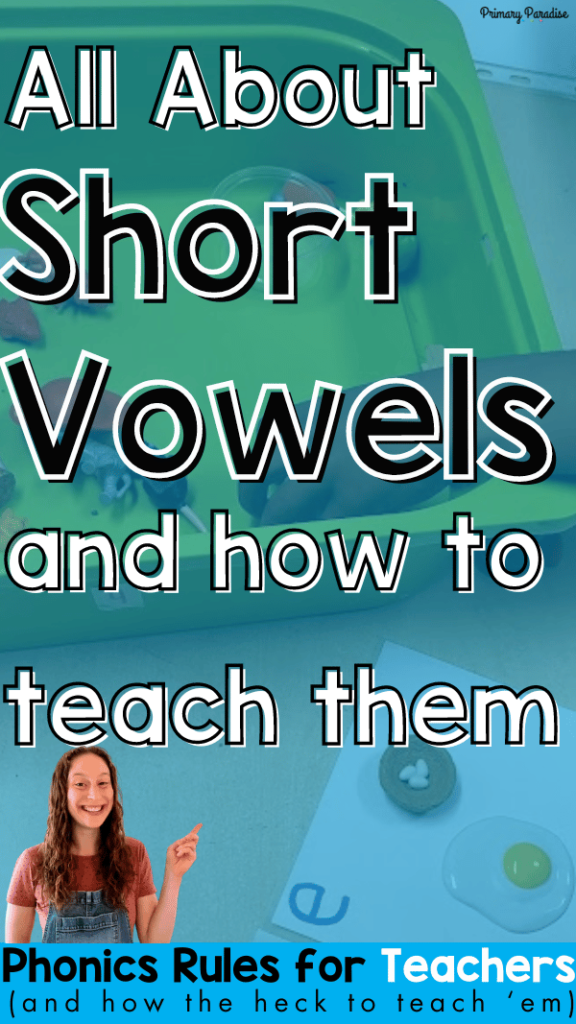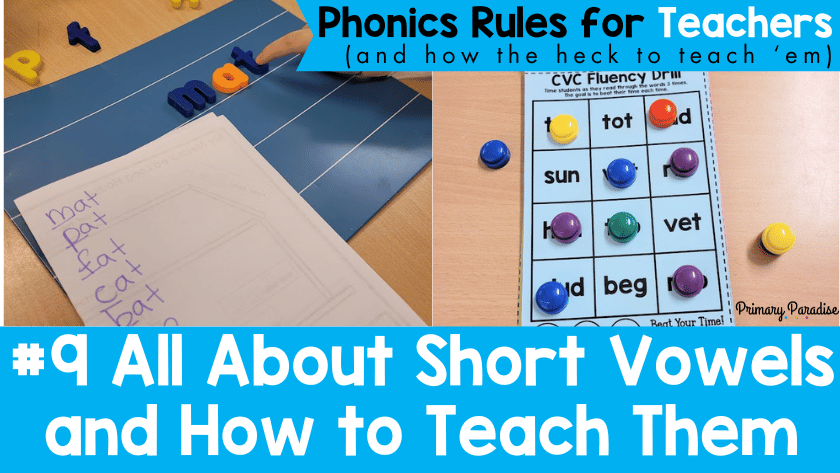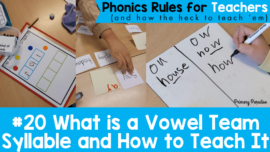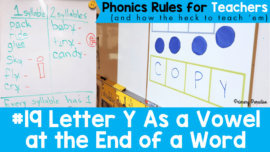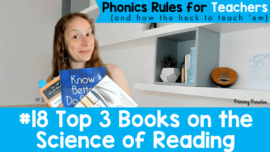Short vowels are typically the first vowel sounds that children learn, but why is that? Let’s take a look at what short vowels are, some important facts for understanding short vowels, and how the heck to teach this important phonics concept to your students.
This is post 9 in my series Phonics Rules for Teachers (and How the Heck to Teach ‘Em). If you’d like to see previous posts, you can click here.
Would you rather listen or watch? Find a podcast version of this blog post here, or watch the video below.
What’s so short about a short vowel?
You probably already know that short vowels are the sounds we hear at the beginning of each of these words- apple, egg, in, odd, up. But, you might not understand why we call short vowels short. Short vowels are called short because our mouth only makes one movement while producing the sound. When we produce a short vowel sound on it’s own, we simply open our mouth. In contrast, when we produce long vowel sounds, our mouths make two movements- (they open then close). This is interesting because English words typically end with a closed mouth.
Where do we find short vowels in words?
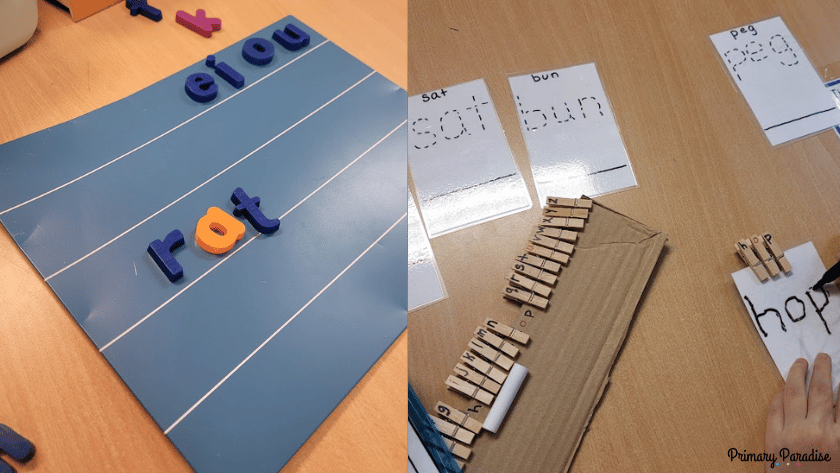
As you might know, consonants are sounds that are produced when the mouth is blocked in some way. Since English words typically end with a closed mouth, that means that most English words don’t end with a short vowel sound. So, we use a consonant after a short vowel to close our mouths. That means that we find short vowels within closed syllables in words. Some examples of closed syllables are hat, egg, wish, got, and thump.
Why should we teach short vowels first?
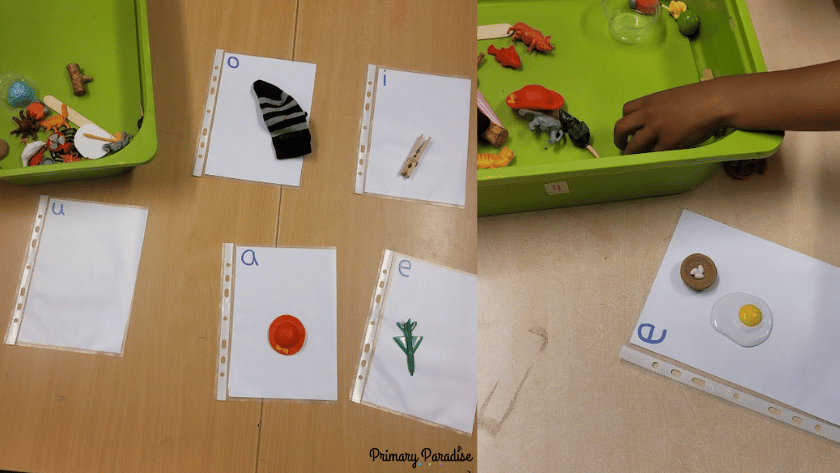
When teaching letter sounds, the goal is to get students to be able to read and write words as soon as possible. This is because applying phonics knowledge in context will help students solidify their knowledge faster.
Since most closed syllables contain a short vowel sound, and short vowels make up about 50% of all syllables in the English language, short vowels are the best place to start when teaching vowel sounds. Of course, in order to use short vowels in context (ie read and write words), students also need to know at least a handful of consonant sounds. (Find an example of an order to teach sounds here).
In addition, while short vowel sounds can be spelled with multiple letters (ea and bread), most of the time, short vowels are spelled with a single letter- a, e, i, o, or u followed by a consonant. This means that there’s a clear and logical pattern for children to learn as they’re beginning to read and write.
How To Teach Short Vowels in Your Classroom
Here are 7 strategies to use when teaching short vowels in your classroom.
Teach along with consonants

First, teach short vowels right along side consonants. If students know even 2 or three consonants and and 1 short vowel, they can already begin reading and writing 2 and 3 letter words. For example, if students know the sounds for s, t, p, and a, they can spell at, sat, pat, tap, and sap.
Use prompts
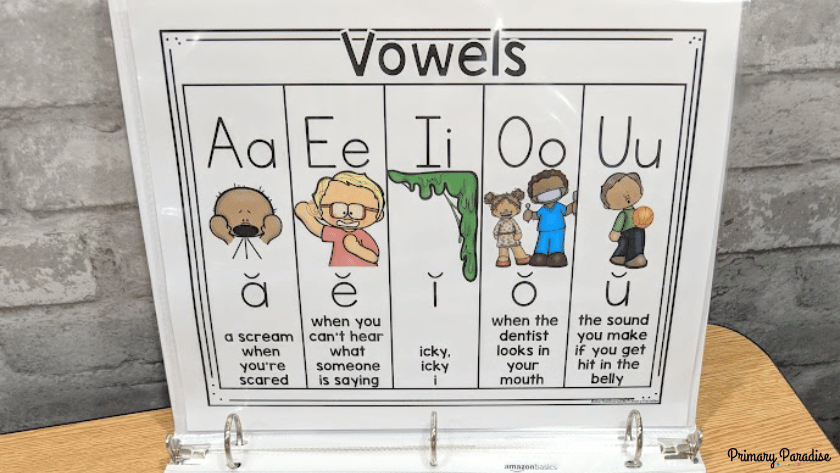
When students are learning short vowel sounds, it’s helpful to teach them key words or hand motions to recall each sound. While we want them to recall them automatically eventually, it can be helpful to embed the new sounds using prompts. Here are the prompts I like to use for short vowels, but there are many great options, or you can come up with your own.
- short a- arms up and say /a/ like you are scared
- short e- hand on your hear like you can’t hear what someone is saying /e/
- short i- wipe your hands like you have something icky on them /i/
- short o- maker a circle around your mouth, say /o/ like you’re at the doctor’s
- short u- hand on your tummy like you got hit in the stomach, say /u/
Focus on mouth position and correct pronunciation
As students are learning each sound, focus on the position of their mouth. Model this and let them look at what their mouth looks like when they produce each sound. This is especially helpful for similar sounds like the short e and i sounds.
It’s also important to stop bad habits in their tracks. When you’re teaching short vowel sounds, be sure students are pronouncing each sound clearly and correctly.
Explain why they’re short
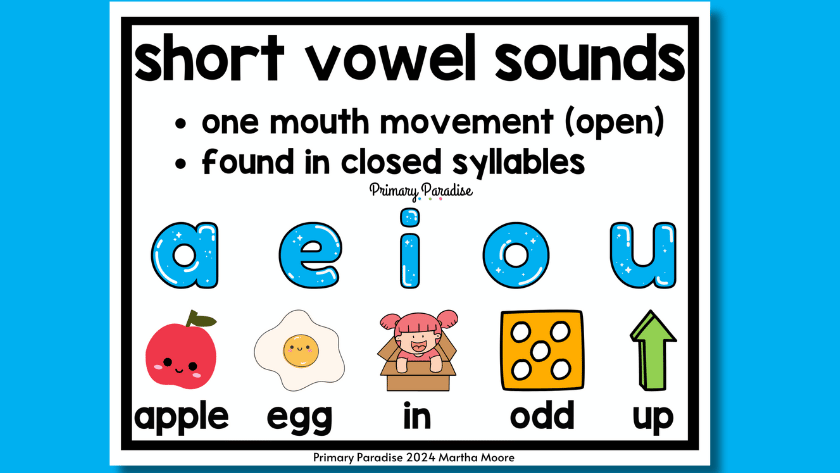
Take a few moments to explain why we call them short vowel sounds- our mouths only make one movement- open. You can also explain how English words usually end with a closed mouth, so we use a consonant in a word after a short vowel.
Read and write in context
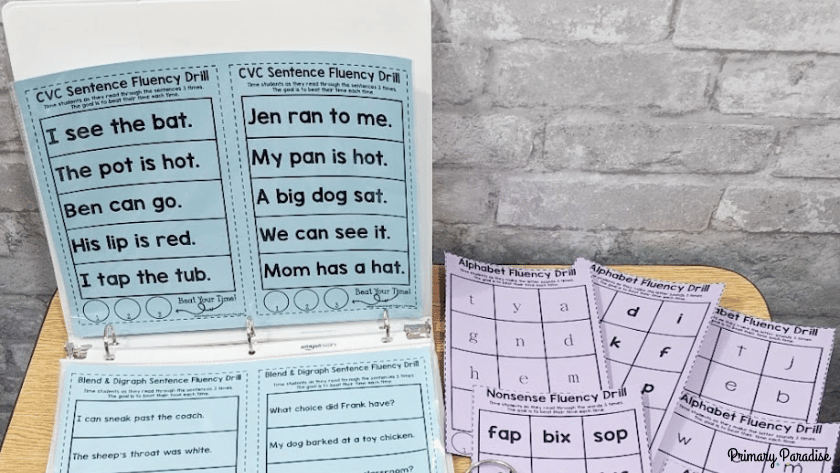
As soon as your students know a few consonants and short vowels, start reading and writing words. You can model this together, work on it as a whole class, in small groups, and individually. The sooner students are reading and building words with their new sounds, the faster they will get comfortable using them.
Use decodable texts to practice

As always, when they are ready, start having students read decodable texts with the short vowel sounds and consonants they know. Our goal with phonics is to read and write, so let students get started right away as soon as they’re ready. Once students know about 10 sounds, they should be able to read simple, decodable texts. If students know only s a t p i n, c, k, e, h ,r ,m an appropriate decodable text might look like “Cat sat. Mat can tap. Mat sat. Cat can tap.”
Teach along with closed syllables
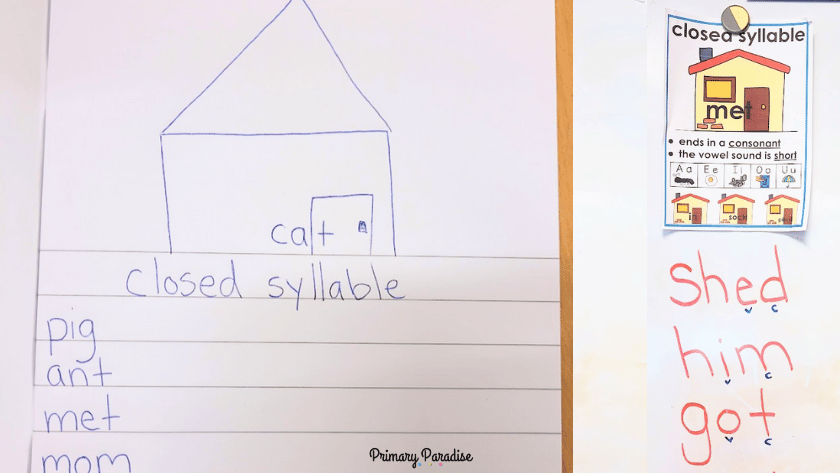
Since closed syllables typically have a short vowel sound, you can teach students to hear syllables and understand the closed syllable as you’re teaching short vowels. The more we can show our students the logical rules of English, the easier it will be for them to have strong encoding and decoding skills.
